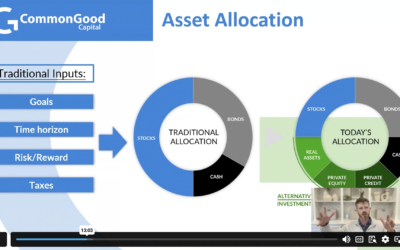Opportunity Zones have recently received additional scrutiny and there have even been proposals to repeal the regulations. It’s important to remember that the Opportunity Zones provision is based on a bipartisan act, which was championed by Senators Tim Scott (R-SC) and Cory Booker (D-NJ) and Representatives Pat Tiberi (R-OH) and Ron Kind (D-WI), who led a regionally and politically diverse coalition of nearly 100 congressional cosponsors [1]. Much of the recent criticism has related to OZ projects and zone designations that sidestepped the intended purpose of the law. Opportunity Zones were created to uplift low-income communities and those living in poverty, which we at CommonGood couldn’t be more aligned with and enthusiastic about.
We have noted that lawmakers from both sides of the aisle have introduced bills that would change or place guardrails around the existing legislation. For example, proposals exist to terminate zones that aren’t low-income areas, to make certain types of luxury projects ineligible, and to add additional reporting requirements for OZ funds. President Trump, who from the beginning has been a staunch supporter of the OZ program, has recently proposed expanding the number of designated zones and has directed federal agencies to prioritize OZs for new government offices [2]. Proposed changes have also come from the Biden campaign [3], as evidenced by a statement about OZs released back in July that said “While there have been positive examples, in too many instances investors favor high-return projects like luxury apartments over affordable housing and local entrepreneurs.” Biden’s campaign proposed these three significant changes to the OZ program [3]:
- Incentivizing Opportunity Funds to partner with non-profit or community-oriented organizations, and jointly produce a community-benefit plan for each investment, with a focus on creating jobs for low-income residents.
- Having the Treasury Department review Opportunity Zone regulations to ensure the tax incentives have clear economic, social, and environmental benefits to a community.
- Creating a system to provide detailed reporting and public disclosure about Opportunity Zone investments and the impact on local residents, including poverty status, housing affordability, and job creation.
A widely touted report from the Council of Economic Advisers estimated that Qualified Opportunity Funds raised $75 billion in private capital by the end of 2019, most of which would not have entered OZs without the incentive [2]. Due to this incredible scale and the underlying benefits of the program, we think it is highly unlikely that that Opportunity Zone regulations get repealed, but the possibility of changes or additional impact reporting requirements should not be taken lightly. An OZ fund operating within lower-income communities, creating meaningful impact, and managed by an experienced team should be well positioned to succeed in this evolving environment.
[1] Economic Innovation Group – History of Opportunity Zones
[2] The Impact of Opportunity Zones: An Initial Assessment
[3] Advancing Racial Equality Across the American Economy





